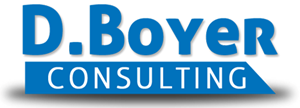Business is mostly conducted via email or phone communications.
Office hours 10:00 a.m. to 6:00 p.m, Mon. - Thurs., and 10:00 a.m. to 2:00 p.m. on Fridays.
SEND EMAIL INQUIRIES DIRECTLY TO:
Dawn.Boyer@me.com
Business is mostly conducted via email or phone communications.
Office hours 10:00 a.m. to 6:00 p.m, Mon. - Thurs., and 10:00 a.m. to 2:00 p.m. on Fridays.
SEND EMAIL INQUIRIES DIRECTLY TO:
Dawn.Boyer@me.com
Business is mostly conducted via email or phone communications.
Office hours 10:00 a.m. to 6:00 p.m, Mon. - Thurs., and 10:00 a.m. to 2:00 p.m. on Fridays.
SEND EMAIL INQUIRIES DIRECTLY TO:
Dawn.Boyer@me.com
Bad Resume Advice: 16 ‘don’ts’ for Resume Writing
September 18th, 2024 by Dawn Boyer
What is some of the worst resume advice you’ve ever gotten? Did you naively use suggestions from someone you thought knew best (or worse, you paid for the advice)? Some resumes I’ve reviewed recently make me shake my head. Where on earth did the resume owners get their advice?
Some job seekers claim their resumes were written by certified professionals and paid up to a thousand dollars for the services. I suspect that the certified professionals believe they know how to do it but haven’t worked behind the scenes as recruiters and do not know what headhunters need from resumes.
With the potential of a new political administration taking over in the new year and anticipating retail workers getting downsized (especially after holiday sales die down), review the ‘bad practices’ to avoid (below) when writing your resume. These tips help career seekers avoid the ’round file’ when creating or updating resumes. Don’t make these mistakes when writing that vital career search resume.
Don’t…
…add photos, birth dates, social security number, marital/family status, or a street address to avoid identity thief. Recruiters don’t need this data until an offer letter is written. Employers cannot require a SS# – even for background checks, until they have provided a contingency offer, with a caveat to pass a background check with a signed authorization.
…use an Internet-based template, making it look like a carbon copy resume that will not stand out from the ‘herd.’ Use plain outlines, simple font (Ariel), and easy-to-read lists.
…leave out education and training; separate these into two sections, include dates, spell out the degree (Bachelor of Science), and include discipline(s), school’s full name, city, and state. Younger job seekers might benefit from noting a GPA (3.00+) to emphasize academic achievements versus lack of experience (number of years worked).
…embellish; do ensure metrics have a ‘~’ (tilde) representing ‘approximately’ for numbers, so later confirmations won’t indicate the applicant was fudging.
…use a professional (story) writer for your resume; they are accustomed to writing adjective-rich and subjective stories versus writing a concise, bulleted list of achievements
… don’t hire a resume writer just because they are ‘certified’ – these credentials can be purchased for under $300 and don’t guarantee expertise in writing.
…add graphics – icons, lines, boxes, and/or IT certification logos – these get stripped in resume SQL database uploads, wasting valuable white space preferred for text information.
…list experience you don’t have; do mention if you have touched it or looked over someone’s shoulder, are ‘familiar with’ or have ‘baseline knowledge’ of, but not experience.
…list fast-food experience unless a desired career. Do note dates employed in retail food services as a customer service representative
…settle for a one-page resume, but don’t make it 10 to 12 pages long, illustrating an inability to write concisely; do target about one resume page per ten years of experience.
…use a text font so small the reader needs a magnifying glass, and don’t format a quarter-inch margin to force a one-page resume; the upload will be converted to larger font anyway, so increase text to 10 or 11 points and make the margins ¾ or one inch.
…print a resume on card stock or brightly colored paper; no one accepts paper resumes anymore – they must be in digital format to upload online to Automatic Tracking Systems (ATS).
…send out thousands of resumes, making the career search unmanageable; don’t waste money on a resume-blast service – recruiters will likely dump them into a proprietary database and never read them.
…send a resume with the same job title objective to Pizza Hut as sent to Microsoft; change the job title objective; don’t write the objective as a huge ‘horse hockey’ paragraph.
…make the resume read like a letter from home. Recruiters need to quickly glance through a concise, bulleted, listings of achievements, not a mass of dense prose.
…call a company to ask about the position; recruiters have already posted all they know and may not know about positions posted by other recruiter(s) in the same company.
Write your resume carefully and avoid the pitfalls of targeting the trashcan. Use these tips to ensure your resume is more professional and eye-catching than your competition.
Dawn D. Boyer, Ph.D., manages and operates a consulting firm in Norfolk/Virginia Beach, Richmond, Colonial Beach (Dahlgren), and Gloucester, VA. Her background is 25+ years in the Human Resources field, of which 12+ years are within the Federal & Defense Contracting industry. She is the author of 1,020+ books and textbooks on business, human resources research, career search practice, women’s studies, genealogy lineages, and adult coloring books. Her books are listed on Amazon.com under her author’s page for Dawn D. Boyer, Ph.D. Reach her at Dawn.Boyer@me.com or visit her website at www.dboyerconsulting.com.
Readers Comments
Bad Resume Advice: 16 ‘don’ts’ for Resume Writing
September 18th, 2024 by Dawn Boyer
What is some of the worst resume advice you’ve ever gotten? Did you naively use suggestions from someone you thought knew best (or worse, you paid for the advice)? Some resumes I’ve reviewed recently make me shake my head. Where on earth did the resume owners get their advice?
Some job seekers claim their resumes were written by certified professionals and paid up to a thousand dollars for the services. I suspect that the certified professionals believe they know how to do it but haven’t worked behind the scenes as recruiters and do not know what headhunters need from resumes.
With the potential of a new political administration taking over in the new year and anticipating retail workers getting downsized (especially after holiday sales die down), review the ‘bad practices’ to avoid (below) when writing your resume. These tips help career seekers avoid the ’round file’ when creating or updating resumes. Don’t make these mistakes when writing that vital career search resume.
Don’t…
…add photos, birth dates, social security number, marital/family status, or a street address to avoid identity thief. Recruiters don’t need this data until an offer letter is written. Employers cannot require a SS# – even for background checks, until they have provided a contingency offer, with a caveat to pass a background check with a signed authorization.
…use an Internet-based template, making it look like a carbon copy resume that will not stand out from the ‘herd.’ Use plain outlines, simple font (Ariel), and easy-to-read lists.
…leave out education and training; separate these into two sections, include dates, spell out the degree (Bachelor of Science), and include discipline(s), school’s full name, city, and state. Younger job seekers might benefit from noting a GPA (3.00+) to emphasize academic achievements versus lack of experience (number of years worked).
…embellish; do ensure metrics have a ‘~’ (tilde) representing ‘approximately’ for numbers, so later confirmations won’t indicate the applicant was fudging.
…use a professional (story) writer for your resume; they are accustomed to writing adjective-rich and subjective stories versus writing a concise, bulleted list of achievements
… don’t hire a resume writer just because they are ‘certified’ – these credentials can be purchased for under $300 and don’t guarantee expertise in writing.
…add graphics – icons, lines, boxes, and/or IT certification logos – these get stripped in resume SQL database uploads, wasting valuable white space preferred for text information.
…list experience you don’t have; do mention if you have touched it or looked over someone’s shoulder, are ‘familiar with’ or have ‘baseline knowledge’ of, but not experience.
…list fast-food experience unless a desired career. Do note dates employed in retail food services as a customer service representative
…settle for a one-page resume, but don’t make it 10 to 12 pages long, illustrating an inability to write concisely; do target about one resume page per ten years of experience.
…use a text font so small the reader needs a magnifying glass, and don’t format a quarter-inch margin to force a one-page resume; the upload will be converted to larger font anyway, so increase text to 10 or 11 points and make the margins ¾ or one inch.
…print a resume on card stock or brightly colored paper; no one accepts paper resumes anymore – they must be in digital format to upload online to Automatic Tracking Systems (ATS).
…send out thousands of resumes, making the career search unmanageable; don’t waste money on a resume-blast service – recruiters will likely dump them into a proprietary database and never read them.
…send a resume with the same job title objective to Pizza Hut as sent to Microsoft; change the job title objective; don’t write the objective as a huge ‘horse hockey’ paragraph.
…make the resume read like a letter from home. Recruiters need to quickly glance through a concise, bulleted, listings of achievements, not a mass of dense prose.
…call a company to ask about the position; recruiters have already posted all they know and may not know about positions posted by other recruiter(s) in the same company.
Write your resume carefully and avoid the pitfalls of targeting the trashcan. Use these tips to ensure your resume is more professional and eye-catching than your competition.
Dawn D. Boyer, Ph.D., manages and operates a consulting firm in Norfolk/Virginia Beach, Richmond, Colonial Beach (Dahlgren), and Gloucester, VA. Her background is 25+ years in the Human Resources field, of which 12+ years are within the Federal & Defense Contracting industry. She is the author of 1,020+ books and textbooks on business, human resources research, career search practice, women’s studies, genealogy lineages, and adult coloring books. Her books are listed on Amazon.com under her author’s page for Dawn D. Boyer, Ph.D. Reach her at Dawn.Boyer@me.com or visit her website at www.dboyerconsulting.com.












